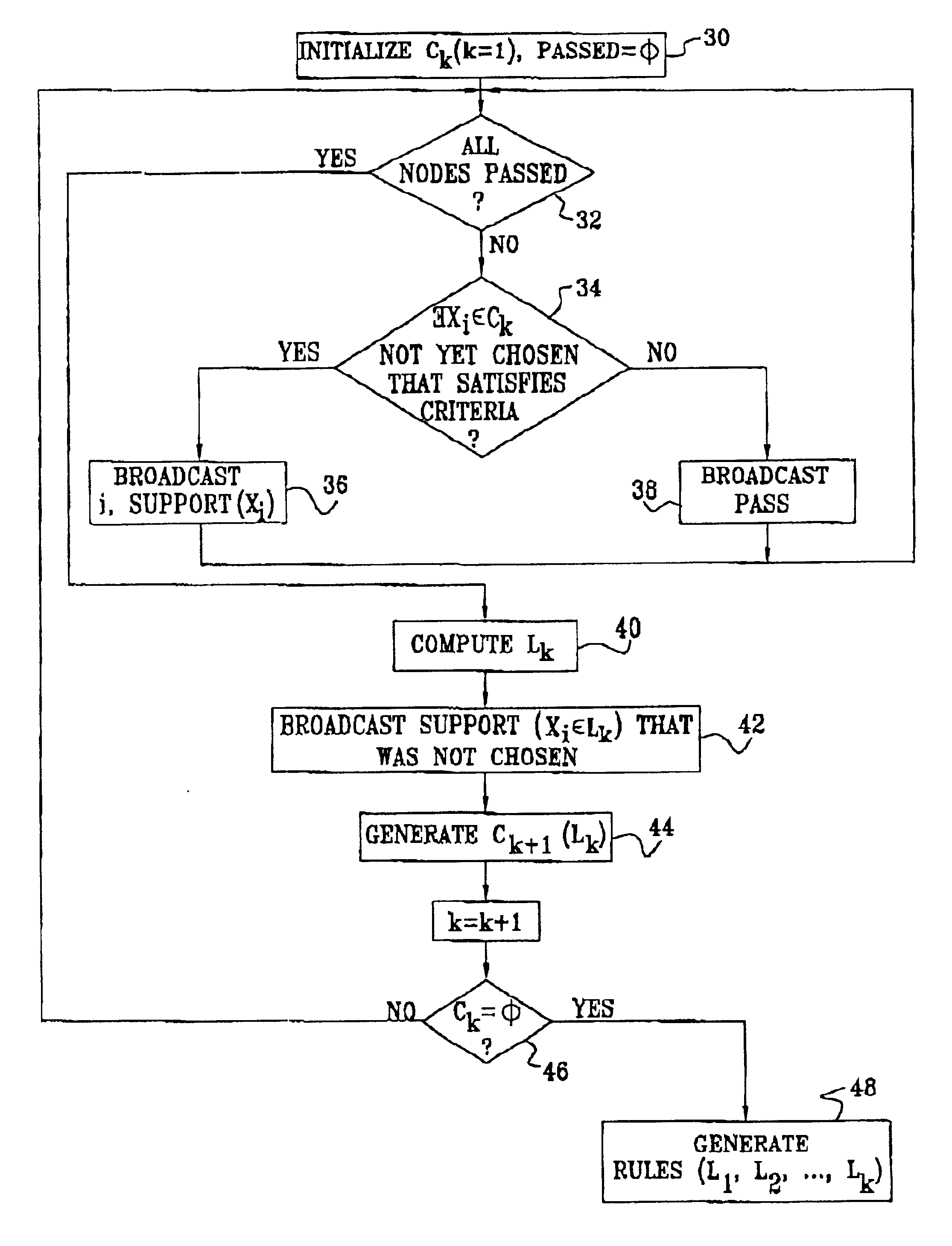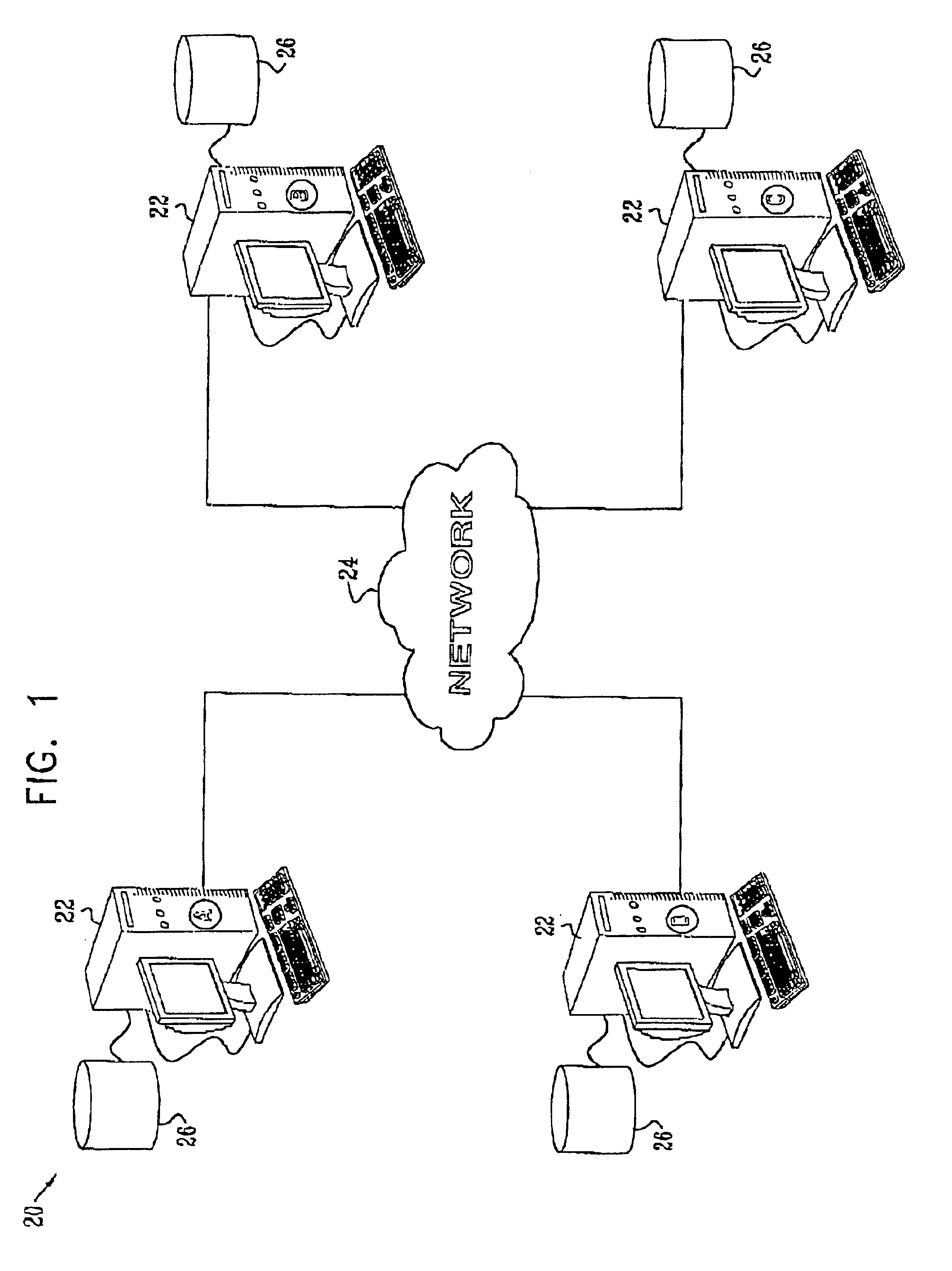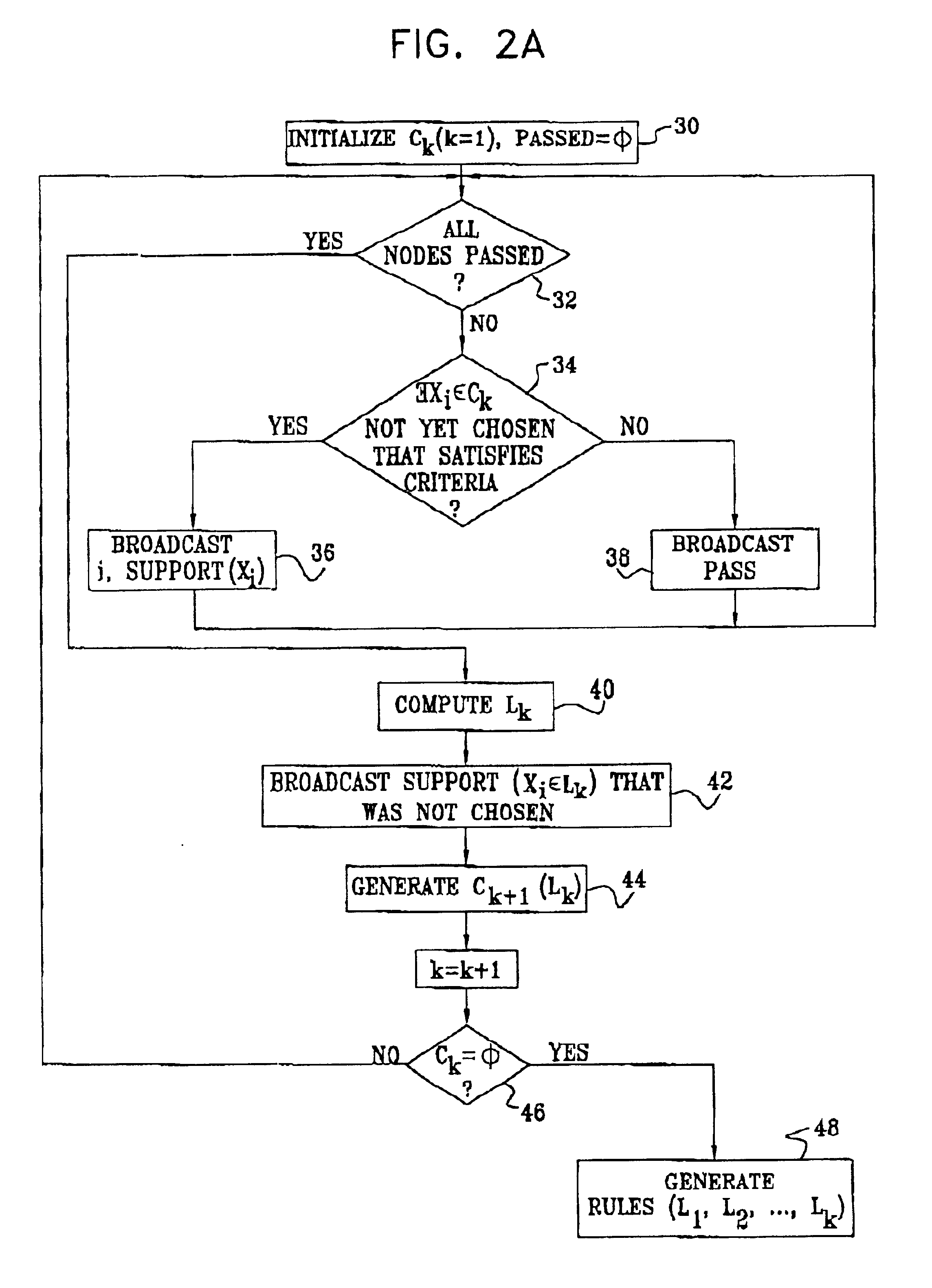Distributed mining of association rules
a technology of association rules and distribution, applied in the field of database mining, can solve the problems of large transactional volume, inapplicability of dd approach, and communication complexity of -arm algorithms among nodes, and achieve the effect of reducing communication complexity
- Summary
- Abstract
- Description
- Claims
- Application Information
AI Technical Summary
Benefits of technology
Problems solved by technology
Method used
Image
Examples
Embodiment Construction
Notation
[0062]Let I={i1, i2, . . . , im} be the set of items in the database to be mined. A transaction t is a subset of I. Let DB be a list of D such transactions. Let {overscore (DB)}={DB1, DB2, . . . , DBn} be a partition of DB into n partitions with sizes {overscore (D)}={D1, D2, . . . , Dn} respectively. An itemset is some X⊂I. Since identical itemset exist for all nodes participating in all the methods described herein, we will denote them as X1, X2, . . . , Xn. For any Xi and db⊂DB, let Support(Xi, db) be the number of transactions in db that contain all the items of Xi. We call xij=Support(Xi, DBj) the local support of Xi in partition j, and Support(Xi, DB) its global support.
[0063]For some user-defined support threshold 0≦MinSup≦1, we say that Xi is frequent iff Support(Xi, DB)≧MinSup·D and infrequent iff Support(Xi, DB)i is locally frequent in the j partition iff Support(Xi, DBj)≦MinSup·Dj. Let Xa, Xp be two frequent itemsets such that Xp⊂Xa, and let 0ap: XpXa\Xp is confid...
PUM
 Login to View More
Login to View More Abstract
Description
Claims
Application Information
 Login to View More
Login to View More - R&D
- Intellectual Property
- Life Sciences
- Materials
- Tech Scout
- Unparalleled Data Quality
- Higher Quality Content
- 60% Fewer Hallucinations
Browse by: Latest US Patents, China's latest patents, Technical Efficacy Thesaurus, Application Domain, Technology Topic, Popular Technical Reports.
© 2025 PatSnap. All rights reserved.Legal|Privacy policy|Modern Slavery Act Transparency Statement|Sitemap|About US| Contact US: help@patsnap.com



